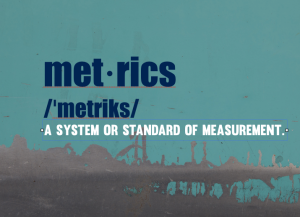I don’t know about you, but when I first started managing our practice, it took me a while to understand what part of the business I needed to measure. In other words, what were the best performance indicators I needed to keep tabs on to ensure the practice was doing well. Of course things like cash flow and account receivables were obvious to me due to by background. But it was apparent that the medical business world is different than, let’s say, a law firm or an accounting firm.
In some respects, there are overlapping metrics, but in the private practice business world, there are other KPIs (that is what the cool kids call it) that are crucial to measure.
If you are in the same boat I was a few years ago, then this post is going to help you out.
But first, in order to get into the right frame of mind, think of KPIs or Key Performance Indicators as patient vitals. Just like recording body temperature, pulse rate (or heart rate), blood pressure and respiratory rate among other things are an important part of what clinical staff do to assess a patient’s well-being, good practice managers also check their practice’s “vitals” in order to determine the practice’s financial wellbeing.
Our friends at Pediatric Management Institute were kind enough to let me re-post an article they published that highlights Four key performance indicators. As if that wasn’t helpful enough, PMI also took the time to write a brief description for each metric as well as illustrate how to calculate the metric.
Enjoy!
Accounts Receivable Turnover
Description:
ART shows your practice’s collections for a given period compared to your total accounts receivable balance.
Why Is This Important?
This KPI is important because it is a barometer of how well you are bringing in the money owed to you. In the example below, you can see that every 1.52 months, you are essentially collecting or adjusting all the money owed for services rendered. In a perfect world, the A/R will turn rapidly. During times of increasing charges such as flu season, this amount will be much different than during the spring. That is why comparing the month of January to the month of May is very misleading. Practices should compare same months when running this analysis.
Formula:
Provider or Practice AR / Provider or Practice Average Monthly Collections
Show the Math:
$87,500 / $57,500 = 1.52
Clean Claim Rate
Description:
This shows the number of “clean” claims submitted compared to all claims filed with managed care plans.
Why Is This Important?
A “dirty” claim is a claim that will have payment delays. More billing systems attempt to catch claims that may be missing important pieces of information before sending to the managed care company for payment. These “dirty” claims should be routed back to the person responsible for the claim not being clean so that they can learn why their actions could have caused a delay in payment. This feedback is a learning process to ensure that your staff and providers seize the opportunity to avoid similar mistakes going forward.
Formula:
Clean Claims / Total Claims Submitted
Show the Math:
950 / 1,000 = 95%
Cost per Encounter
Description:
CpE shows your practice cost per encounter.
Why Is This Important?
This KPI is important because it helps you ascertain the cost to provide care for each patient you see. This becomes a valuable statistic when you are negotiating with managed care companies so you know what it cost you to provide care to a child- especially in capitated contracts!
Formula:
Total Operating Expense / Office Encounters
Show the Math:
$450,000 / 5,000 = $90.00
Net Collection Ratio
Description:
NCR shows total collections as it relates to expected contracted reimbursement rates from payors.
Why Is This Important?
While a practice may charge $300 for a series of CPT codes, the managed care company may have a contract to pay you $210 when you add up the combined allowables for the billed CPT codes. As such, many practices use the Net Collection Ratio to examine the amount of payments compared to the negotiated rates.
Formula:
Total Payments / (Total Charges – Contractual Adjustments)
Show the Math:
$800,000 / ($900,000 – $75,000) = 96.97%
Keep in mind that these are not ALL the KPIs a practice should monitor. There are actually quite a few more. Don’t worry. I knew you’d ask yourself, what are the other KPIs Brandon?
Head on over to the Pediatric Management Institute for 15 Key Performance Indicators.


